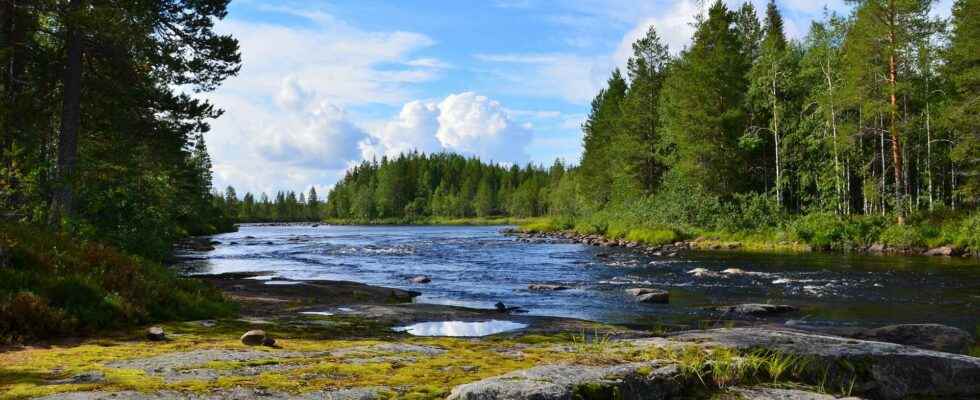You will also be interested
[EN VIDÉO] Water figures in France 32 billion cubic meters taken each year in France, half of which is used to cool thermal power stations. Here is one of the key figures for water in France.
The University of Waterloo in Canada has studied the evolution of debits of 2.272 watercourse in Canada and the United States between 1950 and 2009 and concluded that those that had been developed, or simply modified, by humans were more at risk of disasters than those that had been left intact.
Canals, dams and dykes increase the risk of extreme phenomena
These developments come in different forms: canals, dams, dykes or simply excessive nearby urbanization. The University concluded that all these devices increased water flows and therefore the risk of flooding, because the paved surfaces used are completely impermeable to water. But in some rivers, the opposite has happened: the water flow has been so reduced by the developments that periods of drought have appeared as well as a significant reduction in biodiversity on the area.
Researchers compared these human-modified streams with completely natural and untouched waterways. As a result, 48% of human-made rivers show significant increases in flow, with a risk of flooding. Some 44% of these rivers, on the other hand, show an abnormal decrease in flow and therefore a risk of drought. The novelty of this study lies in the fact that the seasonal consequences were taken into account (spring flooding, summer drought) and not just average readings over the entire year.
Professor Nandita Basu, responsible for the study, specifies that the climate change has an obvious impact on the risks of flooding and drought in watercourses, but that human intervention on these wet area greatly increases the probability of these extreme events.
Renaturation of rivers against flooding
The flows of natural watercourses are regulated by rainfall, the nature of the soil, and the vegetation of the area. The renaturation of watercourses consists in giving them back an aspect close to their original natural state in order to find a wildlife and a diversified flora, but also to avoid floods and droughts. These renaturation actions, increasingly carried out in France, concern the banks as well as the bed of the river.
the Seine-et-Marne water site specifies that with the evolution of agricultural practices and other human activities, watercourses have undergone direct modifications to their form physical and therefore on their functioning. These changes, such as recalibration, cleaning outthe culvert, the complete displacement of the watercourse or the extraction of materials, have the consequences of a significant loss of biodiversity, a loss of diversity of the flow of the watercourse, therefore a degradation of the quality of the water. water, a risk of aggravation of floods downstream, because they accelerate the speed some water “.
That renaturation involves restoring the sinuous curves of the rivers, restoring the vegetation of the banks and shores and the sedimentary continuity, rediversifying the aquatic habitats as well as the flows. Actions that simply aim to restore the original functioning of waterways in order to regain the balance that they naturally offer to nature and to people.
Restoration of a river in the Chevreuse Valley. © Regional Natural Park of the Haute Vallée de Chevreuse
Support your independent scientific media: discover our subscription formulas!
4 good reasons to subscribe to Futura on Patreon:
- A site without any advertising from 3.29 euro per month.
- It is without commitment.
- Access to priority content, in preview, just for you.
- You support our business in the best possible way. A real motivation for us!
Interested in what you just read?
